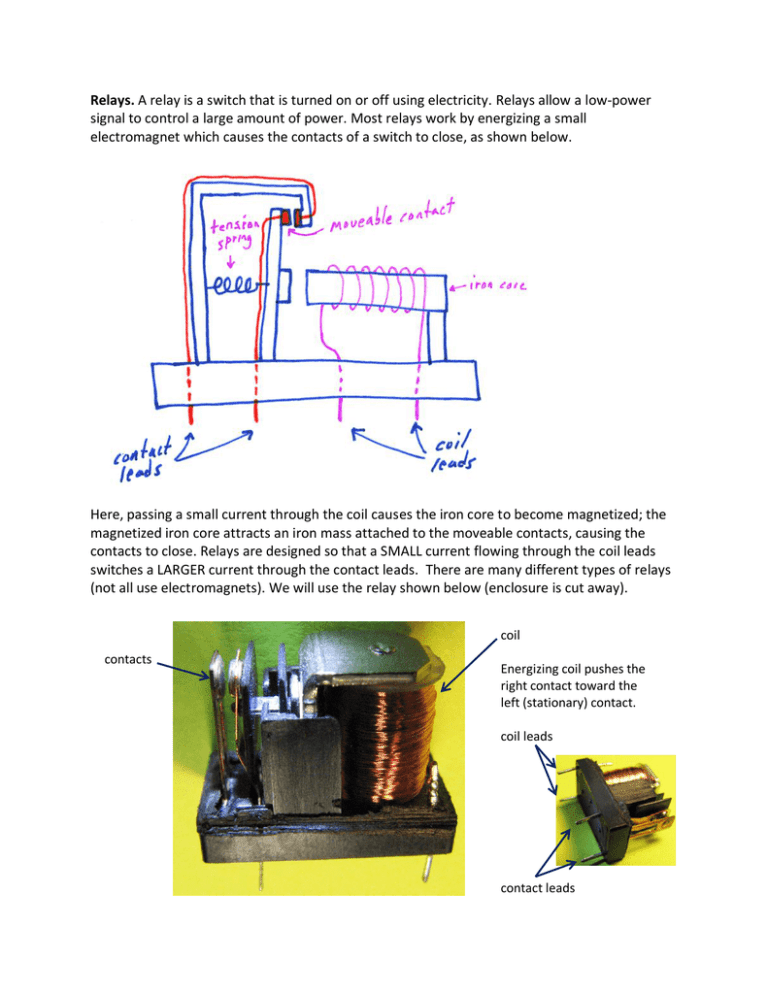Relays. A relay is a switch that is turned on or off using electricity
advertisement

Relays. A relay is a switch that is turned on or off using electricity. Relays allow a low-power signal to control a large amount of power. Most relays work by energizing a small electromagnet which causes the contacts of a switch to close, as shown below. Here, passing a small current through the coil causes the iron core to become magnetized; the magnetized iron core attracts an iron mass attached to the moveable contacts, causing the contacts to close. Relays are designed so that a SMALL current flowing through the coil leads switches a LARGER current through the contact leads. There are many different types of relays (not all use electromagnets). We will use the relay shown below (enclosure is cut away). coil contacts Energizing coil pushes the right contact toward the left (stationary) contact. coil leads contact leads Relays are specified using several parameters: 1. Coil Voltage - The voltage that must be applied across the coil leads to open or close the contacts. 2. Coil Current – The amount of current that must be passed through the coil leads to open or close the contacts. 3. Contact Rating or Contact Current – The amount of current that can pass through the contact leads. 4. Default State of the Contacts – The contacts can be either open (switch = off) or closed (switch = on) by default. a. The contacts of a normally open (NO) relay are open when no current is passed through the coil; passing current through the coil causes the contacts to close, allowing power to flow through the contact leads. b. The contacts of a normally closed (NC) relay are closed when no current is passed through the coil; passing current through the coil causes the contacts to open, preventing power from flowing through the contact leads. 5. Number of Poles – The number of separate circuits that can be switched by energizing the coil. a. SP = single pole (one circuit is switched) b. DP = double pole (two circuits are switched). 6. Throw – Throw describes what happens to the contacts when the coil is energized. a. Single Throw – Energizing the coil of a single throw (ST) relay closes the contacts if it is a NO relay; energizing the coil of a ST relay opens the contacts if it is a NC relay. b. Double Throw – Energizing the coil of a double throw (DT) relay can either open or close the contacts, depending on how it is wired. A DT relay can be wired to either come on or go off when the coil is energized. Image released to public domain through Wikipedia. Consider the relay shown to the left. Questions: Is this relay NO or NC? Is this a SP or DP relay? Is this a ST or DT relay? Which of the designations above fit this relay? (SPST, SPDT, DPST or DPDT)


